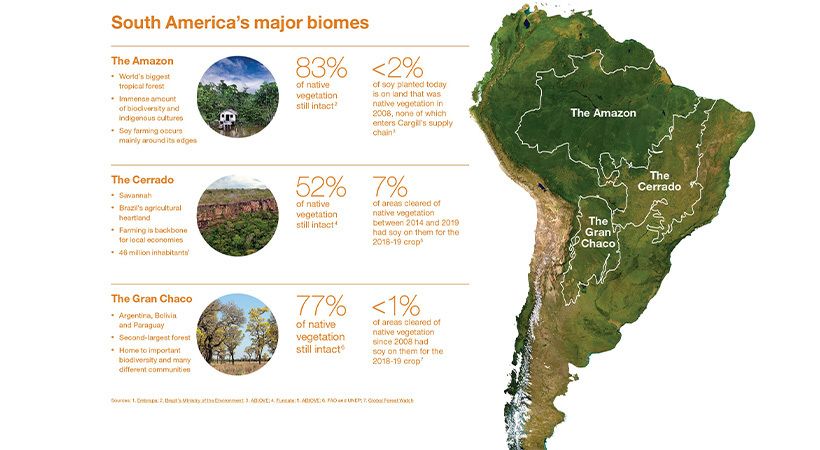Global agribusiness Cargill has completed mapping its Brazilian soybean suppliers, the company announced in its mid-year progress report on June 30.
The Minneapolis-based company said the move was part of its progress in building a deforestation-free soy supply chain.

In the report, the company estimated that 95.68% of soy from Brazil is grown on deforested and unconverted land (using the 2008 Forest Code as a reference point).
The company has also expanded its direct engagement with farmers in Brazil, including launching a new farmers association in the state of Bahia.
“We have not wavered in our commitment to protecting forests and native vegetation, and we believe this can be done in ways that are economically viable for farmers and local communities,” said John Hartmann, global agricultural supply chain sustainability leader at Cargill.
“By working with farmers, customers, governments and other industry players, we have made significant progress on our soy action plan and will continue efforts to make the soy supply chain more sustainable.”
Cargill's mapping of its Brazilian supply chain allows the company to identify the location of its direct and indirect suppliers.
The company said it was also continuing to expand its sourcing and sustainable sourcing certification program in Brazil and Paraguay. Farmers who commit to this program commit to producing their crops using best agricultural practices, protecting worker well-being and managing greenhouse gas emissions in a process of continuous improvement.
Cargill also outlined its partnerships with farmers and advances in its US $ 30 million fund to find solutions to protect forests in economically viable ways for farmers in South America.
Going forward, over the next six months, the company said it will continue to fulfill its commitments to the Soy Action Plan. This included transforming its supply chain to be deforestation-free, protecting vegetation beyond forests; promoting responsible production; respect and defend the rights of workers, indigenous peoples and communities; Maintain high standards of transparency by communicating key metrics, progress and grievances.
Source: OFI Magazine
{module Form RD}












